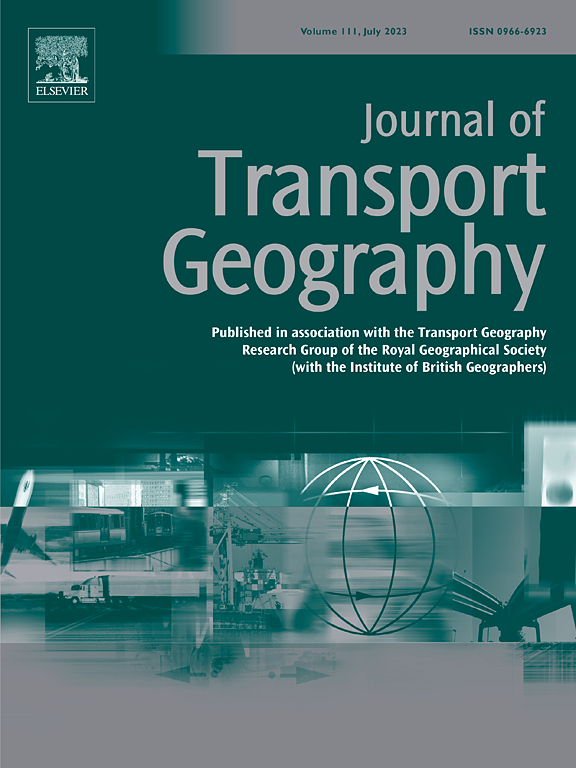How do built environment characteristics influence metro-bus transfer patterns across metro station types in Shanghai?
IF 5.7
2区 工程技术
Q1 ECONOMICS
引用次数: 0
Abstract
Unravelling the complex relationship between metro-bus transfer behavior and the built environment is crucial for the construction of a sustainable urban public transportation system. The current research prominently emphasizes modeling station-level metro-bus transfer ridership in relation to the built environment that surrounds with transit stations, few has specially focused on exploring and comparing this relationship among various transit station types. Based on the case study of Shanghai central city, this research clustered metro stations according to the time-series similarity of metro-bus transfer ridership pattern by combining Derivative Dynamic Time Warping and K-medoids. Then, for each metro station group, the spatiotemporal heterogeneity and nonlinearity of built environment effects on transfer ridership pattern were examined simultaneously by applying an adapted GTWR-RF method that integrates Geographically and Temporally Weighted Regression (GTWR) and Random Forest (RF). Our empirical analysis confirmed the importance of key built environment determinants and their associations with transfer ridership vary significantly among different metro station types. Furthermore, this research highlighted the proposed GTWR-RF model, which considers both spatiotemporal heterogeneity and nonlinearity effects of the built environment on the transfer ridership, can significantly improve the prediction ability. These findings provide a comprehensive perspective for policymakers, enabling them to formulate transportation policies with consideration of station type specification and to bolster the overall public transportation usage in cities.
求助全文
约1分钟内获得全文
求助全文
来源期刊

Journal of Transport Geography
Multiple-
CiteScore
11.50
自引率
11.50%
发文量
197
期刊介绍:
A major resurgence has occurred in transport geography in the wake of political and policy changes, huge transport infrastructure projects and responses to urban traffic congestion. The Journal of Transport Geography provides a central focus for developments in this rapidly expanding sub-discipline.
 求助内容:
求助内容: 应助结果提醒方式:
应助结果提醒方式:


